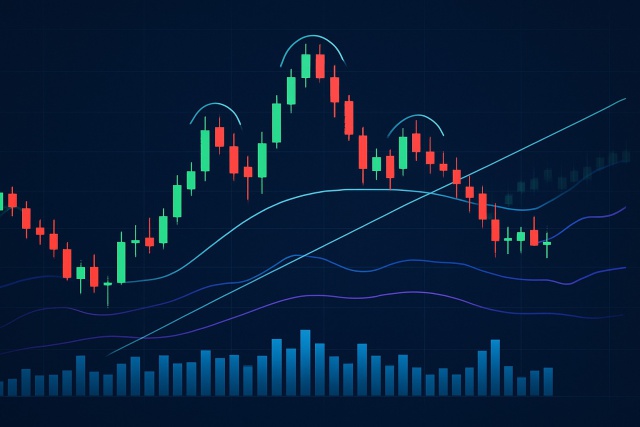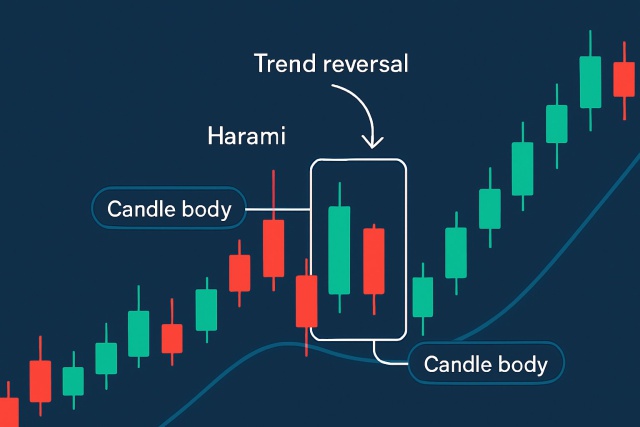
El Salvador's Bitcoin Currency Experiment
El Salvador's adoption of Bitcoin as legal tender marks a groundbreaking experiment in national curr...

Algorithmic options trading is rapidly reshaping financial markets by automating complex options strategies with remarkable accuracy and speed. This approach relies on data-driven algorithms that identify, execute, and manage options trades, offering perks like disciplined execution and swift reactions to changing market conditions. Building an algorithmic options trading system involves knitting together market data, sophisticated pricing models, real-time order execution and robust risk management—all the pieces of a well-oiled machine.
Algorithmic options trading leans on computer algorithms to take the wheel when deciding to buy, sell or hedge options. Rather than trusting human gut feelings it sticks to quantitative models and predefined rules to make steady and repeatable trades. You’ll want to get familiar with key terms like calls, puts, strike prices, expiration dates and the Greeks along the way.
Creating an algorithmic options trading system means piecing together several key components: reliable real-time and historical data feeds, sophisticated options pricing and volatility models, robust risk management frameworks, efficient execution engines and thorough backtesting setups.
Successful algorithmic options trading really hinges on having reliable data from a mix of sources—think historical option prices and the details of the underlying stocks as well as live market feeds. Making sure the data is accurate and timely is the secret sauce. When it comes to tools, individuals often lean on well-known software like QuantLib and handy Python libraries such as NumPy and Pandas. Then you’ve got platforms like TradingView and TrendSpider which are a godsend for analysis, strategy development, backtesting and visualization.
| Platform/Data Provider | Data Coverage | Pricing (USD) | Ease of Use | Supported Languages |
|---|---|---|---|---|
| TradingView | Offers a broad and impressive sweep of equities, options, and futures — really a one-stop shop for market watchers | Pricing tiers start from the Pro+ plan at $19.95 per month, climbing up to the Elite plan at $59.95 per month | A user-friendly, web-based interface that even beginners tend to find welcoming | Pine Script (their own baby), plus API access |
| TrendSpider | Provides in-depth, detailed data on equities and options, perfect if you like to dig deep | Plans kick off at $39.99 monthly for Basic and max out at $99.99 for Premium | Loaded with advanced charting tools and clever AI-driven analysis — it’s like having a smart assistant by your side | Web platform that lets you customize indicators to your heart’s content |
| QuantLib (library) | A treasure trove of open-source models for options and fixed income — no strings attached | Absolutely free, making it a favorite for those who don’t want to shell out | Tailored for people comfortable with programming; not exactly plug-and-play | Supports a handful of languages including C++, Python, and more |
| Interactive Brokers API | Delivers real-time trading data plus order execution capabilities — a real powerhouse for serious traders | Pricing is commission-based, so you pay as you go | While extremely powerful, it comes with a steep learning curve — patience is a virtue here | Supports multiple languages including Java, Python, and C++ to fit your coding style |
| CBOE Market Data | Comes straight from the Chicago Board Options Exchange — the source itself | Subscription-based, so you sign up to get access | Built with the professional user in mind, no-nonsense and robust | Accessible through a variety of APIs and data feeds, giving you options to hook in however you like |
Creating effective options trading algorithms starts with clearly defining well-tested trading hypotheses and picking strategies that know how to roll with the punches. Writing clean modular code that doesn’t tie you in knots is also important. Careful backtesting using historical and simulated data is key to sizing up how tough your algorithm really is and spotting any lurking risks. Then comes paper trading in actual market conditions.
Clearly lay out your trading hypothesis and spell out the exact market inefficiency or edge your algorithm is designed to capitalize on. No room for vague ideas here.
Choose options strategies like spreads or straddles that align with your market outlook and sit comfortably within your personal risk tolerance.
Build your algorithm using clean, well-structured code and lean on the right development tools and libraries that make testing a breeze.
Run thorough backtests on historical data to understand profitability, drawdowns, and how sensitive your parameters are.
Tweak your strategy settings carefully to avoid the dreaded overfitting trap and keep your model reliable when reality hits.
Put your algorithm through its paces with paper trading in live market conditions. This little dress rehearsal helps verify its performance and execution before you go all in for real trading.
Strong risk management truly sits at the core of algorithmic options trading. It’s about tweaking position sizes on the fly, sticking to stop-loss rules like a hawk and constantly watching margin levels to keep exposure in check. Playing by the rules is equally vital—this means sticking to SEC regulations and being mindful of pattern day trading limits while staying on top of brokerage requirements. Clear audit trails and regular reports don’t just tick compliance boxes.
Running algorithmic options strategies in a live setting calls for a sharp eye on execution quality, particularly when wrestling with slippage and latency to keep that precious alpha intact. Picking brokers with rock-solid APIs and uptime you can actually count on is a no-brainer. Building fail-safe systems and staying on top of things with continuous monitoring isn’t just helpful—it’s a must.

Real-time options trading dashboard showing market data and automated trade execution in progress
Sometimes, the proof is in the pudding—or in this case, the nitty-gritty details of how algorithmic options trading systems have actually done when the rubber meets the road. Let’s dive into some real-world examples where these systems did not just talk the talk but walked the walk, showing how savvy automation can make a solid difference in the fast-paced world of options trading.
Picture a quantitative hedge fund that created an algorithm mixing stochastic volatility models with slick delta-neutral strategies. They automatically roll out iron condors when volatility is low and pivot to straddles as earnings approach. This helps them nab steady premium and tweak their hedges on the fly like seasoned pros. Retail traders use TradingView's sturdy charting and scripting tools to craft and backtest their own options strategies before diving in.
"Successfully deploying algorithmic options trading usually requires a thoughtful blend of thorough quantitative research, rock-solid infrastructure, and vigilant ongoing monitoring to keep a handle on the risks that come with those tricky, ever-shifting market moves." — Dr. Elena Martinez, Quantitative Trading Expert
Algorithmic options traders often face headaches like lousy data quality and the common trap of overfitting from fiddling with too many parameters. Execution delays caused by network lag or broker quirks are also frustrating. These bumps can usually be smoothed out by putting thorough data validation in place and picking models carefully through consistent out-of-sample testing. Leaning on reliable low-latency broker APIs combined with round-the-clock real-time monitoring also helps.
Start by setting aside dedicated time to fully understand algorithmic options trading concepts and programming. Focus on quantitative methods that can seem challenging at first. Begin with simple strategies that are easy to follow and use helpful tools like TradingView or TrendSpider to strengthen your analysis. As you progress, gradually improve your development and testing setup. There is no need to hurry; taking it slow and steady will lead to success.
Struggling to improve your trading performance? Edgewonk's advanced analytics tools are designed to give you the edge you need.
With detailed trade journaling, robust strategy analysis, and psychological insights, you'll gain a comprehensive understanding of your strengths and weaknesses. Don't miss out on this game-changing opportunity.
Traders, it's time to elevate your game. Edgewonk is the ultimate trading journal software designed to empower you with data-driven insights and personalized strategies. Take control of your trading journey and maximize your potential.
23 posts written
Driven by a passion for uncovering the hidden patterns that underlie market dynamics, Isla Wyndham brings a unique perspective to the realm of trading, blending quantitative analysis with a keen intuition for human behavior.
Read Articles
El Salvador's adoption of Bitcoin as legal tender marks a groundbreaking experiment in national curr...

Unlock the power of the head and shoulders pattern with this complete guide. Learn to spot, trade, a...

Learn how the harami candlestick pattern signals potential market reversals. This guide breaks down...

Discover what IOUs mean in finance, their role as informal debt acknowledgments, and how understandi...
